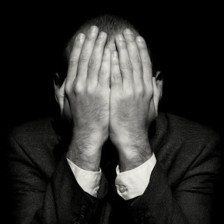I have learned not to trust my day-to-day feelings.
Over the years they have been known to deceive me. At times the feeling of joy and a lack of worry pervade.
At other times I am left to drown in the throes of deep depression. I don’t always know what tomorrow will bring.
Standing up instead of falling down
I stood up for myself last week at work. A colleague had been harsh regarding my scar. It left me depressed and afraid to leave my home.
Then my sister and wife reminded me that I don’t have to be a victim to these attacks. They reminded me that I have control to some degree over these hurtful comments… It is quite simple actually, you just need to ask them to stop.
Believe it or not, I wasn’t aware that this was an option. The fear and anxiety his comments provoked were paralyzing and I felt helpless to them. It may have been the feelings of helplessness that affected me most.
So, the following week when I saw him and he started to make a comment I simply asked him to stop. And that was it, it was if he didn’t realize comments about my facial scar would be hurtful. This surprised me maybe as much as him. I didn’t need to mention my BDD, why would I? I simply needed to ask him to stop. That gave me a power that before I did not know I had.
Getting off the Antidepressants for my BDD
I am not sure if this has been beneficial, but it certainly hasn’t hurt. And to some degree I am much happier off of them.
I am sleeping much better, and as I mentioned have been off of the Ambien.
Having treated many people with antidepressants I can definitely say they help some people more than others. For me they made me nauseas, effected my sleep and sex life in such negative ways that the side effects were outweighing the benefits.
Today is a new day
Today we are on a short trip away from home with the family. Yesterday I felt great, today I feel less great, but I feel better than the day before. For whatever it is worth, at least I don’t feel like hurting myself, and this is worth a lot.
As the cool November air replaces the sizzle of summer, I feel at peace. Sitting by a fire-place, enjoying coffee with family and friends, enjoying life.
BDD is a life suck, and a time suck. It detracts from life which is perfect. BDD is the result of our doubt… doubt that the way things are is the way things were meant to be. It is a result of our lack of control and our desire to control.
Life without BDD is just around the corner, it is out there… I just can’t seem to grab hold for long.

